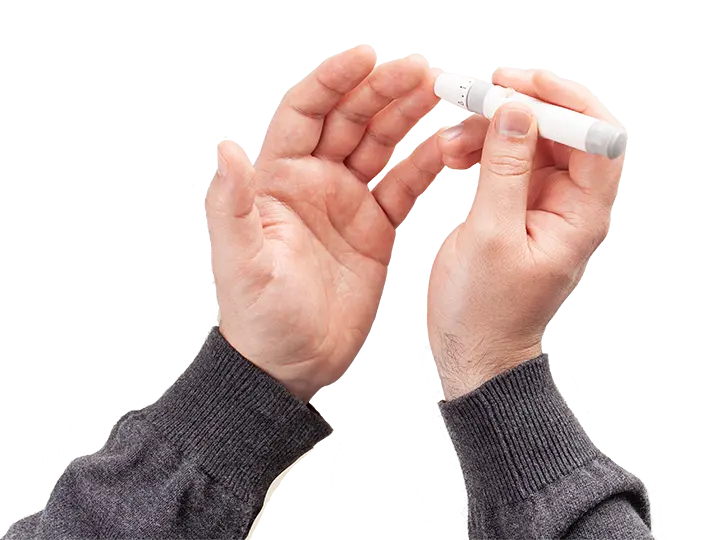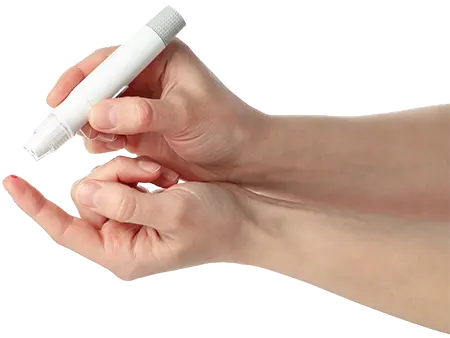nex-22 FOR TREATMENT OF TYPE 2 DIABETES

what is
what is type 2 diabetes?
Type 2 diabetes is a metabolic disease in which the body has difficult to regulate the sugar level in the blood, which leads to high blood sugar.
The disease occurs mainly in upper middle age (>45 years), but the incidence increases in younger years because of an increasingly sedentary lifestyle and unhealthy diet. Common symptoms include fatigue, increased thirst, and frequent urination. The symptoms are initially vague and can sometimes be hard to notice.
Type 2 diabetes can cause several serious sequelae, such as kidney damage, impaired vision, and heart disease. Treatment is therefore crucial, both for the patients’ general health and well-being as well as for limiting associated costs for healthcare and society.
PRESENCE/OCCURRENCE
Type 2 diabetes is one of our most common diseases and the incidence is increasing rapidly with an aging population. Datamonitor Healthcare estimates that there are approximately 600 million people worldwide living with type 2 diabetes today, a number that is estimated to increase to 635 million by 2027 (1).
Of those living with type 2 diabetes, not all are diagnosed, and even fewer receive adequate treatment. In the seven major markets in the western world, it is estimated that around 50 million people will be treated with pharmaceuticals 2027 (3), with an increase of 2-3% per year.
TREATMENT
The treatment goal of type 2 diabetes is a lower blood sugar level. Change of lifestyle in terms of eating habits and exercise is an important first step in treatment of type 2 diabetes. Low calory diet and physical activity are key for lowering blood sugar levels.
Several pharmaceuticals are available to treat type 2 diabetes. One of the most common drug classes for the treatment of type 2 diabetes are GLP-1 (glucagon-like peptide-1) analogs, which are given subcutaneously once daily or once per week. Liraglutide is a GLP-1 analogue that is currently given by daily injections.
MARKET
The sales of pharmaceuticals against type 2 diabetes in the seven major markets in the Western world are estimated to about 50 billion dollars in 2022. GLP-1 analogues account for about 15 billion dollars and is expected to grow by around 10 percent per year during the period 2022-2029 (3).
BETTER COMPLIANCE AND MORE CONVENIENT TREATMENT
NEX-22: CONTROLLED RELEASE GIVES BETTER COMPLIANCE AND MORE CONVENIENT TREATMENT
NEX-22 is a depot formulation of liraglutide with a monthly release that can replace today’s treatment with daily or weekly injections of liraglutide and other GLP-1 analogues.
MAJOR MEDICAL NEED
In a study (2) among patients with type 2 diabetes treated with GLP 1-analogues, approximately 50 percent did not adhere to the prescribed dosage regimen – even though a non-compliant treatment can lead to serious sequelae. Nanexa assesses, based on interviews with leading doctors, that injections given once a month instead of daily, would give a significantly better compliance with the prescribed dosage regimen. Thus, NEX-22 would be an important addition to today’s treatment options. Increased compliance contributes to an improved treatment effect over time and thereby healthier patients and savings for healthcare and society.
CONVENIENT
Patients with low adherence to prescribed treatment are the main target group for NEX-22. However, Nanexa’s assessment is that the increased convenience with significantly fewer injections makes NEX-22 an attractive treatment option for the majority of all type 2 diabetes patients treated with GLP-1 analogues.
(1) Datamonitor Type 2-diabetes Disease analysis March 2021
(2) Weiss et.al. Patient Prefer Adherence . 2020 Nov 27;14:2337-2345
(3) Global Data Type 2-diabetes forecast 2021


